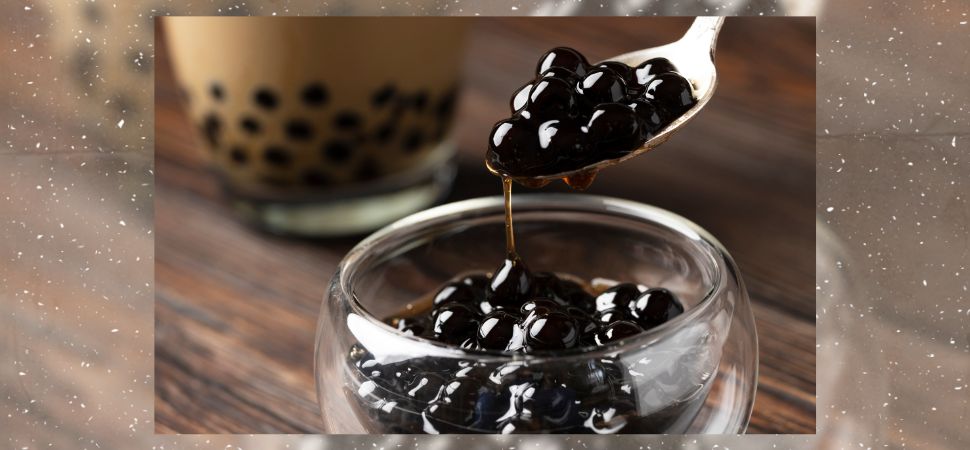What is Tapioca?

Tapioca, a root crop that originated in South America, has become a dietary staple in numerous countries across Asia, Africa, and beyond. The starch from the cassava root can also be sold as flakes, flour, or pearls.
This dietary staple is gaining momentum and becoming a popular substitute for wheat and other grains because it is a healthy gluten-free option. Moreover, it has been consumed for thousands of years. It is an excellent source of pure carbohydrates and contains a varied nutritional value in terms of vitamins and fiber.
What is Tapioca Made of?

Since tapioca is an underground-grown vegetable, it resembles sweet potato. One can produce cassava flour by peeling, drying, and grinding the cassava root, which people often misinterpret as tapioca flour.
On the other hand, tapioca is made by cleaning and extracting the starchy liquid from cassava root. Once squeezed, this starchy liquid is dried to obtain tapioca powder, which is then processed to make tapioca flakes or pearls.
Different Forms of Tapioca
Cassava roots are a multi-purpose ingredient. There are many byproducts of this product, which include:
-
1. Tapioca flour

Cassava root is dehydrated to extract the pulp to obtain tapioca flour. Since tapioca flour is neutral in flavor and naturally gluten-free, it can be used as a base substitute for cornstarch flour.
-
2. Tapioca flakes

Because of their strong binding properties, Tapioca flakes are used to prepare savory soups and pies. They are also preferred to cornstarch since they dissolve quickly in hot liquids. Baking in flakes gives products a smooth and spongy texture.
-
3. Tapioca syrup

Tapioca syrup is the ideal choice if one wants to substitute synthetic sweeteners with natural sweeteners. It breaks down slowly without causing an instant spike in blood sugar levels.
Health Benefits of Tapioca
You might be suprised about the health benefits tapioca offers. These are:
-
1. A suitable alternative for restricted diets
People allergic to wheat, gluten, or grains often find it challenging to obtain a substitute to fill their potions without guilt. Tapioca is a suitable alternative to supplement complex carbohydrates and fill the need for wheat or corn-based products.
-
2. It helps in gaining healthy weight
Often, synthetic preservatives are added to weight gainers and protein powders. However, tapioca can be the ideal source to gain muscles without hampering the daily diet with a gluten-free option.
-
3. It improves blood circulation
Anemia, fatigue, and weakness can result from magnesium loss and several vitamin deficiencies. However, tapioca can bridge the gap by being the powerhouse of manganese and thus supplying essential nutrients to the body.
-
4. It reduces the chances of birth defects
Minerals, vitamins, and nutrient components are key components for pregnant women. Correctly processed tapioca can serve enough vitamin B complex and folic acid to avoid birth defects. This wholesome food also reduces the risk of neural tube congenital defects.
-
5. Easy to digest and light on the gut
Digestive problems are extremely common and cause uneasiness, bloating, or digestive pain, which can hamper health in the long run. Consistently consuming handfuls of tapioca in various forms can infuse the body with sufficient fiber and eliminate gut problems.
-
6. Facilitates skin and hair repair
Sago or tapioca is a powerhouse of antioxidants, anti-inflammatory compounds, and amino acids. It promotes hair repair and rejuvenates skin, which helps facilitate anti-aging benefits, reduce acne, improve collagen production in the body, and fight dandruff-prone scalps with its antimicrobial properties.
Who Should Avoid It
While not many severe effects are linked with daily tapioca consumption, there are a few things to consider before making this ingredient a staple dietary intake.
-
1. Unsuitable for people with diabetes
Studies show that one cup of tapioca pearls can provide 544 calories and roughly 135 grams of carbohydrates, making it a good source for a carb-rich diet. However, excessive consumption of tapioca can negatively impact the health of diabetic patients and could prove detrimental to their overall health.
-
2. Poorly processed cassava roots can prove to be fatal
Cassava root naturally contains a toxic compound called linamarin, which alters into hydrogen cyanides and causes cyanide poisoning when it's not processed correctly. In late 2017, a cassava flour dish in western Uganda contained poorly processed cassava roots with high cyanogenic content, resulting in an outbreak of cyanide poisoning. Following an established processing method ensures that consumption is healthy and safe.
-
3. A staple for many but lacks wholesomeness
A thoroughly processed tapioca is safe to consume and cheap to buy. However, it lacks valuable nutritional value. Several developing countries rely heavily on tapioca to fill their stomachs; however, it lacks essential protein and nutrients. This creates deficiencies and leads to malnutrition, goiters, and rickets.
Now that you know the health benefits and possible side effects of Tapioca, it is an ingredient that supplies many nutrient values, including iron, complex carbohydrates, flavonoids, and more. These tiny white pearls can have several health benefits when processed correctly and consumed appropriately.
Moreover, you can tantalize your taste buds by making delicious food with Tapioca. Cook favorite dishes, add the richness of its syrup to your pie as a sweetener, or entice your taste buds by making popular Indian sago recipes. It's a palatable dish that everyone can enjoy.









.jpg?updatedAt=1735200955338)
.jpg?updatedAt=1735197007532)